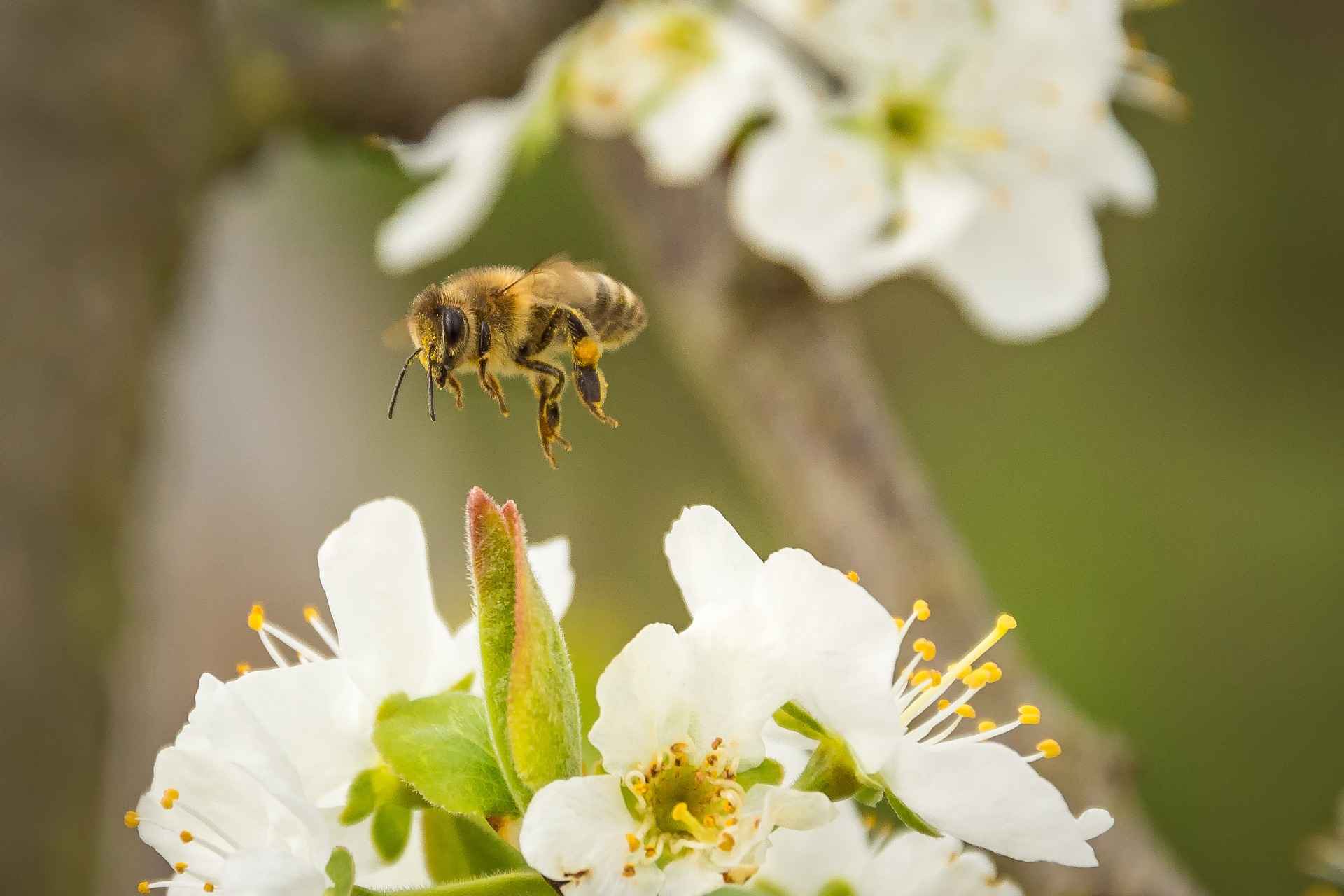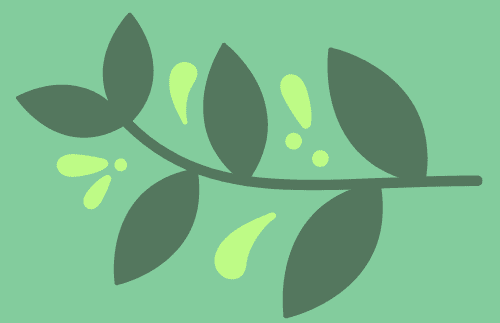Last updated on June 12th, 2022 at 02:25 pm
When we talk about pollinators, we think first of all of foraging insects and mainly of bees. Indeed, their role is crucial for the pollination of fruit tree flowers. But we also talk about pollinators for fruit trees: a bee can pollinate many flowers of an apple tree, but if it does not have the right pollen in its hairs, the fertilization and the formation of the apple may not happen!
Often, a fruit tree must have another tree of the same species in its vicinity that will allow fertilization and fruit formation. What does a good pollination allow? What is a self-fertile variety? And a self-sterile variety? What is the role of insects? What is incompatibility? And above all, which pollinating varieties should you choose for your fruit trees? Discover the answers to all these questions in this article!
SELF-FERTILE, SELF-STERILE FRUIT TREE? THE FOCUS!
To produce fruit, a fruit tree needs to be pollinated. A good pollination is therefore essential to produce but also to increase the yield and the quality of the fruits. Indeed, well pollinated and fertilized fruits have a better fruit set (this term designates the transformation of the ovary of the flower into fruit), the fruits are less deformed and more resistant to climatic hazards. In the garden and especially in the orchard, it is therefore important to take an interest in pollination when choosing, buying and planting fruit trees.
Let’s start by examining what the terms self-fertile, self-sterile, hermaphrodite, monoecious and dioecious mean.
1) Fruit trees with hermaphrodite, self-sterile and self-fertile flowers
Among fruit trees with hermaphrodite flowers (each flower carries both male and female organs) we distinguish self-sterile (or allogamous) varieties which need pollen from another variety to be fertilized, and self-fertile (or autogamous) varieties, which can fertilize themselves with their own pollen.
Note that even in self-sterile varieties, the presence of other varieties can increase pollination.
Here is a summary table of self-sterile and self-fertile fruit trees.
| Self-sterile fruit trees | Self-fertile fruit trees |
| Almond tree Cherry tree Apple tree Pear tree Plum | Apricot tree Sour cherry Quince tree Fig tree (common type) Mulberry Peach Plum tree Vine Elderberry |
To complicate matters further, there are sometimes self-sterile and self-fertile varieties within the same species, for example in plum. Recent varieties are more and more selected to be self-fertile, so we see new self-fertile varieties in groups with a large majority of self-sterile, for example in apple.
In the case of self-sterile fruit trees, it is necessary that your garden (or your neighbors) accommodate different varieties to ensure good pollination. It is important that the flowering of these multiple varieties occur at the same time! But, let’s add to that one more caveat, pollen incompatibility. Some fruit trees of the same species, even if they bloom at the same time, will be incompatible, the pollen of one pollinating poorly the pistil of the other. It is thus necessary to choose varieties compatible between them. Incompatibility concerns pear trees, plum trees and cherry trees but not apple trees.
Moreover, one should not confuse the earliness of the fruit with the flowering period. Indeed, two varieties of fruit trees can bloom at the same period but the harvest of one can be early and the other late.
2) Fruit trees with monoecious and dioecious flowers
The kiwi (in the vast majority of varieties) is a dioecious fruit species: some plants bear only female flowers and other plants only male flowers. It is therefore essential, for the pollination of this species, to have both female trees (which will bear fruit) and male trees (only for pollen).
Monoecious fruit species have distinct flowers on the same plant: only female flowers and only male flowers. It is common that female and male flowers do not mature at the same time, in which case several varieties are recommended for good pollination. This is the case of the hazelnut tree.
The Role Of Insects In The Pollination Of Fruit Trees
The fruit trees we grow are entomophilous, which means that insects are their pollination vector. It is even a very important vector: an apple tree isolated from insects but not from the wind will produce 12 times less apples than a tree accessible to insects, even when two compatible varieties are side by side.
Why and how to encourage their presence in the garden?
Encouraging the presence of insects is essential for a better production. The “best” pollinating insects (the most efficient) for fruit trees are bees (domestic and solitary) and bumblebees. Of course, many beetles, butterflies, flies and mosquitoes also participate, to a lesser extent, in the transport of pollen between the flowers of different varieties.

Foragers need a wide variety of flowering plants. In many vegetable gardens and orchards, flowering plants are not sufficient throughout the year. It is a good idea to provide them with food over a long period of the year. To do this, don’t hesitate to sow and plant a variety of trees, shrubs and flowers.
It is also a good idea to encourage natural areas, to create rural hedges, flower strips, but also to house insects by offering them piles of stones, composts, bundles of hollow stems, and why not, insect hotels.
APPLE TREE POLLINATION – SUMMARY TABLE
The apple tree produces flowers that bloom over a period of about 15 days. They produce a lot of nectar and pollen which attracts many pollinating insects. The apple tree is a highly self-sterile species, it needs pollinating varieties for a good fructification.
| Variety | Flowering | Pollinator variety |
| Antares | April | Golden Delicious, Idared, Granny Smith, Reine des Reinettes |
| Ariane | April | Royal Gala, Reine des Reinettes, Golden |
| Belle de Boskoop | April | Golden, Starking Delicious, Reine des Reinettes, Idared |
| Belle Fille de Salins | Mid-May | Brive Reinette |
| Calville Rouge d’Hiver | Mid-April | Reine des Reinettes, Golden Delicious |
| Choupette | April (long flowering) | Antares®, Goldrush®, Golden Delicious, Granny Smith, Reine des Reinettes, Red Delicious, Braeburn, Elstar, Fuji et Idared. |
| Ballerina® Bolero | March | Ballerina® Maypole |
| Ballerina® Valse | March | Ballerina® Maypole |
| Ballerina® Polka | March | Ballerina® Maypole |
| Ballerina® Maypole | March– April | Ballerina® Bolero, Valse, Polka |
| Cox’s Orange | Mid-april | Calville blanche d’hiver, Jonathan, Reine des reinettes |
| Rhapsodie | March – April | Ballerina® Maypole, Reine des Reinettes |
| Rondo® | March– Avril | Ballerina® Maypole, Reine des Reinettes |
| Cybèle® Delrouval | April | Delbarestivale, Régali, Royal Gala, Reine des Reinettes, Delbard Jubilé |
| Delbard Jubilé® Delgollune | April | Régali®, Delbarestivale®, Cybèle®,Harmonie®, Pomme des moissons®, Royal Gala®, Reine des reinette |
| Delbarestivale® Monidel | Mid-April | Tentation, Royal Gala, Delbard Jubilé |
| Elstar | April | Gala, Golden Delicious, Cox Orange, Reine des Reinettes, Granny Smith, Belchard, Melrose |
| Fuji | April | Golden Delicious, Granny Smith, Gala, Topaz |
| Golchard ® | April | Starking Delicious, Golden Delicious, Granny Smith |
| Golden Delicious | April | Reine des Reinettes, Granny Smith, Starking Delicious, Melrose |
| Grand Alexandre | April | Golden Delicious, Granny Smith |
| Granny Smith | March – April | Melrose, Idared, Golden Delicious |
| Jonagold | Avril | Starking Delicious, Melrose, Reine des Reinettes, Ingrid Marie |
| Maggy® | Avril | Reine des Reinettes, Golden |
| Melrose | April | Golden Delicious, Granny Smith, Reine des Reinettes |
| Mondial Gala | April | Granny Smith, Golden Delicious |
| Croquella® delgrina | April– May | Auto-fertile |
| Garden Sun Red® | April | Auto-fertile |
| Rambour d’Hiver | April | Reine des reinettes |
| Regali | April | Royal Gala, Delbard Jubilé, Harmonie, Tentation |
| Reine des Reinettes | April | Golden Delicious, Idared, Melrose |
| Reinette de Brive | May | Reinette de Caux, Reine des Reinette, Golden Delicious |
| Reinette de Caux | April | Reine des reinettes |
| Reinette du Mans | April– May | Reine des reinettes |
| Reinette Grise du Canada | April | Granny Smith, Reine des Reinettes, Idared, Golden Délicious |
| Royal Gala | April | Elstar, Reine des reinettes, Granny Smith, Golden |
| Winter Banana | End of March | Calville Blanche Hiver, Idared, Golden Delicious |
Discover our wide range of apple trees for a diversified orchard !


